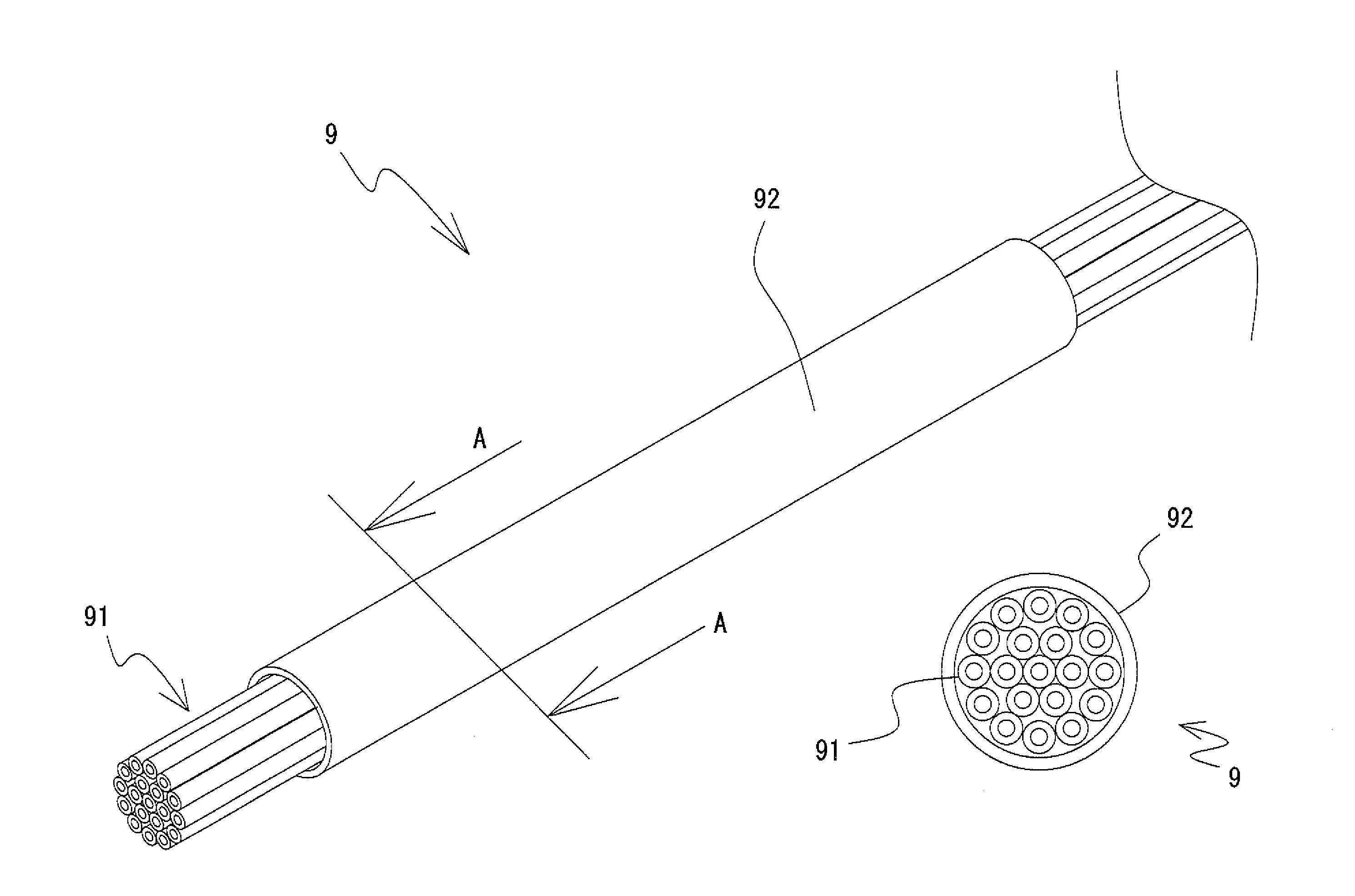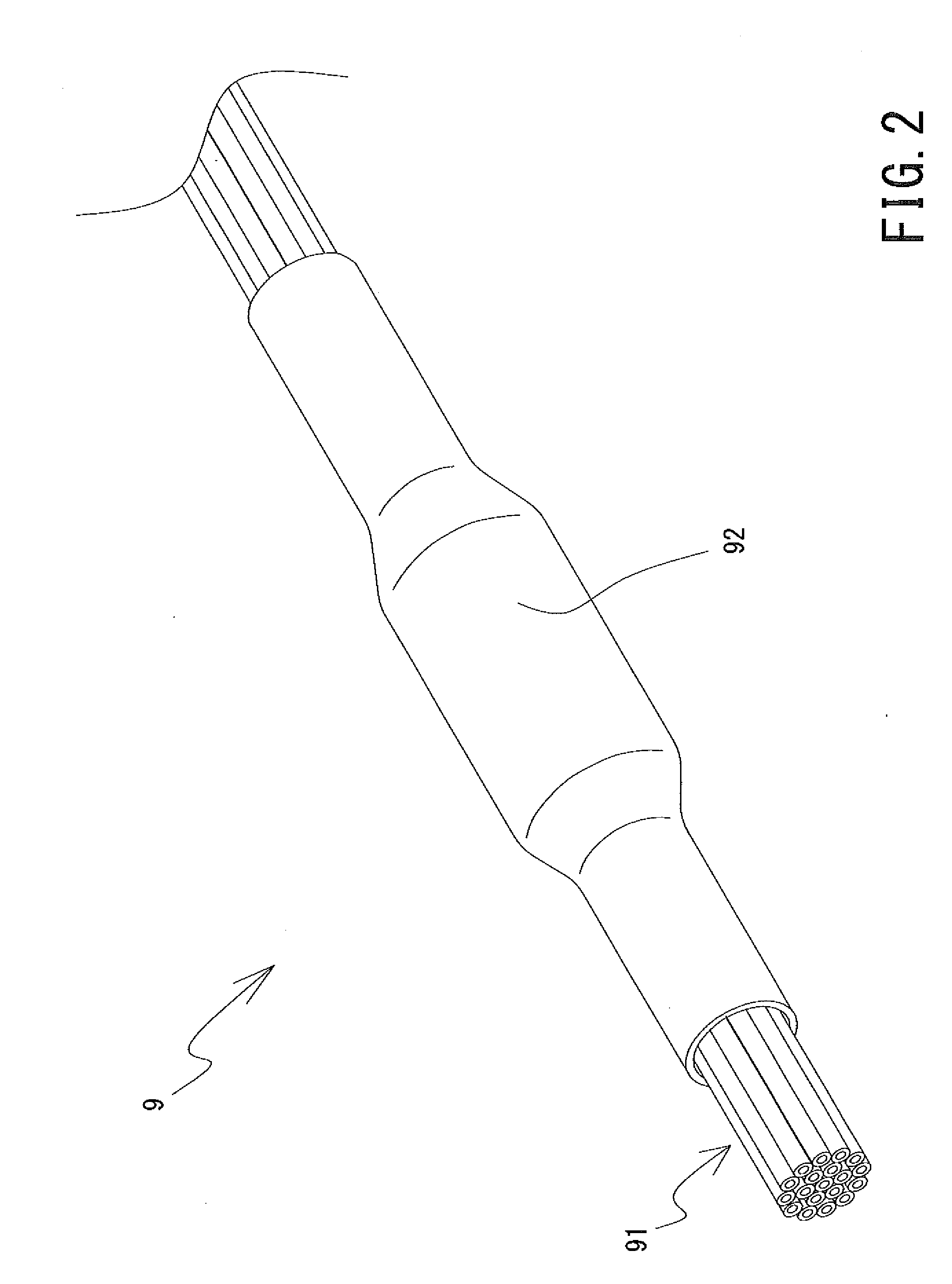Wire harness, wire harness manufacturing method and wire harness manufacturing apparatus
a manufacturing method and wire harness technology, applied in the direction of insulating conductors/cables, cables, insulated conductors, etc., can solve the problems of reducing working efficiency, affecting the appearance of tape-wrapped parts, and the inability to set electric wires in such apparatuses, so as to reduce the number of process steps, reduce the number of wire harness parts, and reduce the manufacturing cost
- Summary
- Abstract
- Description
- Claims
- Application Information
AI Technical Summary
Benefits of technology
Problems solved by technology
Method used
Image
Examples
first embodiment
[0078]Next, a wire harness manufacturing apparatus 1 according to the present invention will be described.
[0079]FIG. 3 is a schematic diagram showing principal elements in the structure of the wire harness manufacturing apparatus 1 according to the first embodiment of the present invention. As shown in FIG. 3, the wire harness manufacturing apparatus 1 according to the first embodiment of the present invention has a material plasticizing unit 11, a nozzle 12, and an air blowing unit 13. The wire harness manufacturing apparatus 1 according to the first embodiment of the present invention molds the covering member 92 so as to cover the electric wire 91 by heat-plasticizing thermoplastic material as the material of the covering member by the material plasticizing unit 11 and feeding the material through a hose (member as a channel of the thermoplastic material) 14 or the like to the nozzle 12, and discharging the plasticized thermoplastic material from the nozzle 12. Further, the air b...
second embodiment
[0143]As a modification of the above-described wire harness manufacturing apparatus 2 the following example can be given.
[0144]As shown in FIG. 11, the thermoplastic material channels 2231 and 2241 have predetermined positions on the side of the hose engagement members 223b and 224b as start points, and extend from the start points in the planar direction of the flat plate members 223a and 224a by a predetermined length, and branch into two channels. Further, the channels extend in the planar direction of the flat plate members 223a and 224a by a predetermined length, and respectively branch into two branches, i.e., total four branches. Since the thermoplastic material channels 2231 and 2241 formed in this manner are formed so as to extend in the planar direction different from the direction in the first embodiment, the length from the start points to the end points of the respective channels are different.
[0145]Accordingly, assuming that the respective channels have the same cross...
PUM
| Property | Measurement | Unit |
|---|---|---|
| temperature | aaaaa | aaaaa |
| length | aaaaa | aaaaa |
| temperature | aaaaa | aaaaa |
Abstract
Description
Claims
Application Information
 Login to View More
Login to View More - R&D
- Intellectual Property
- Life Sciences
- Materials
- Tech Scout
- Unparalleled Data Quality
- Higher Quality Content
- 60% Fewer Hallucinations
Browse by: Latest US Patents, China's latest patents, Technical Efficacy Thesaurus, Application Domain, Technology Topic, Popular Technical Reports.
© 2025 PatSnap. All rights reserved.Legal|Privacy policy|Modern Slavery Act Transparency Statement|Sitemap|About US| Contact US: help@patsnap.com



